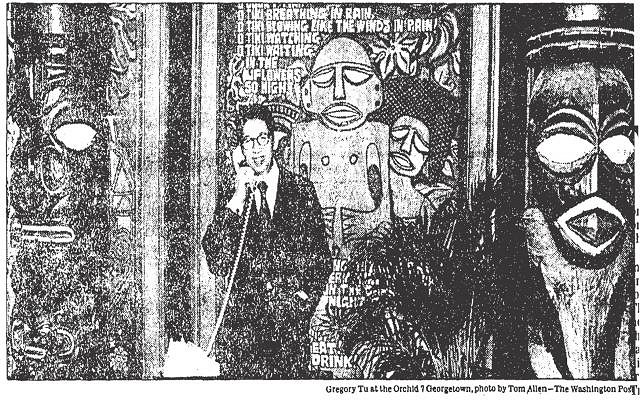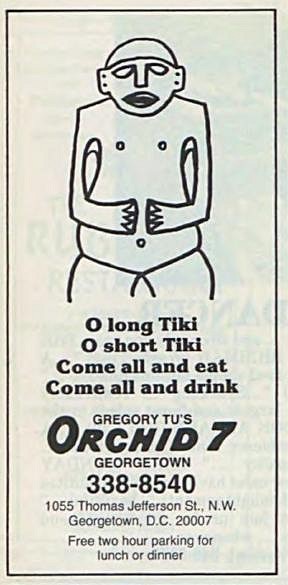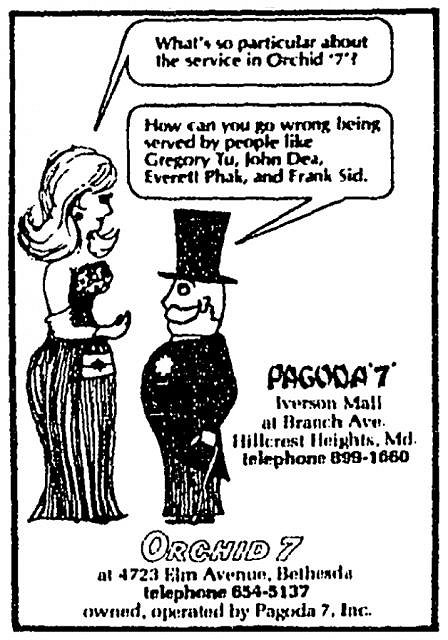Pages: 1 7 replies
|
JD

Johnny Dollar
Posted
posted
on
Sat, Feb 19, 2011 4:35 AM
Name:Orchid 7 Description:
http://www.tikicentral.com/viewtopic.php?topic=14770&forum=17&vpost=172399 http://dcgrocery.multiply.com/journal/item/260
[ Edited by: Johnny Dollar 2011-02-20 18:20 ] [ Edited by: johnny dollar 2011-02-22 11:16 ] |
|
JD

Johnny Dollar
Posted
posted
on
Sun, Feb 20, 2011 3:14 AM
act i the first installment. this place has not been documented excepting a mention by Sabina in 2005 after a visit to Oceanic Arts - http://www.tikicentral.com/viewtopic.php?topic=14770&forum=17&vpost=172399 so mix up a mai tai, read, and enjoy... until things get FONKY
p.s. from what we can figure from the panel in the photo's background... o tiki breathing in rain, [towards the bottom...] |
|
JD

Johnny Dollar
Posted
posted
on
Sun, Feb 20, 2011 3:21 AM
act ii: 1978
1979
|
|
JD

Johnny Dollar
Posted
posted
on
Sun, Feb 20, 2011 6:11 PM
ACT III: THE TRAGEDY OF HE WHO WOULD BE THE SECOND COMING OF TRADER VIC on a whim, my curiosity of what happened to the restaurateur who decided to ramp up a polynesian restaurant in georgetown in freakin 1977 led me to do an innocent google search... which led to a washington post archive plus other internet searches...
http://www.highbeam.com/doc/1P2-1221290.html
http://www.wcl.american.edu/exams/exam_display.cfm?exam_id=163&prof_id=30
http://articles.baltimoresun.com/2000-10-01/news/0010010079_1_body-montgomery-county-riggins
http://www.charleyproject.org/cases/t/tu_lisa.html O_o OK... start a failed tiki restaurant when you think it's gonna bring in $1.25 million in profits... have a common law wife and live in potomac... murder her and dispose of her body. morality tale, anybody??? [ Edited by: Johnny Dollar 2011-02-20 18:17 ] |
|
B
bigbrotiki
Posted
posted
on
Mon, Feb 21, 2011 12:42 AM
"Oh Tiki blowing like the winds in pain!" What a horrid ending of a Tiki career! The only crime story in Tiki that's worse is maybe that of Sante Kimes, wife of Tropics Motel chain owner Ken Kimes. |
|
JD

Johnny Dollar
Posted
posted
on
Tue, Feb 22, 2011 11:17 AM
Bob at Oceanic Arts had this to say:
i was probably unclear in my original message, probably now that i review it, sabina had seen photos of the panels, not panels themselves. so much for thorough reporting on my part blush addendum: according to WaPo article in 1992, Tu got 30 years, which means (?) he could be free by 2022 - ? [ Edited by: johnny dollar 2011-02-28 08:44 ] |
|
JD

Johnny Dollar
Posted
posted
on
Thu, Apr 12, 2012 8:07 AM
here is a nice ad and blurb in the 1977 edition of "dossier," a dc publication http://www.scribd.com/doc/78865794/2/PIlIicattOnlleSll-n the artwork is based off of the Oceanic Arts carved panel.
|
|
JD

Johnny Dollar
Posted
posted
on
Mon, Jul 22, 2013 7:50 PM
here is a very weird one from the washington post, september 10, 1972.
|
Pages: 1 7 replies






